Ostpreußen |
|
|
|
| Übersicht – Contents: | |
Ostpreußen |
|
|
|
| Übersicht – Contents: | |
Flaggen – Flags: |
|
 |
Landesfarben – colours of the country |
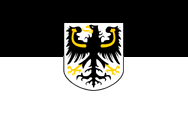 |
Dienstflagge – official flag, |
|
|
|
andere Flaggen – other Flags: |
|
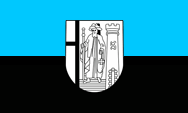 |
Flagge der heutigen deutschen Minderheit in Ermland und Masuren – flag of the today's German minority in Warmia and Masuria |
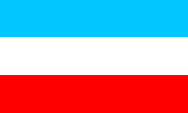 |
Flagge der Masuren
– flag of Masuren |
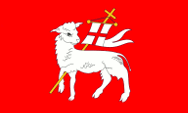 |
Flagge Fürstbistum Ermland
– flag of the Prince-Bishopric of Ermland (Warmia), (Rekonstruktion gemäß Wappen – reconstruction following the arms) |
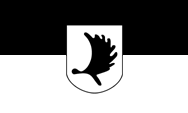 |
Flagge der Landsmannschaft Ostpreußen – flag of the Landsmanship of East Prussia |
|
|
|
historische Flaggen – historical Flags: |
|
 |
Flagge des Deutschen Ordens – flag of the Teutonic Order (Teutonic Knights) |
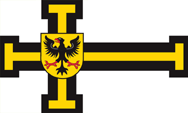 |
Flagge des Hochmeisters des Deutschen Ordens – flag of the High-Master of the Teutonic Order (Teutonic Knights) |
|
|
|
Bedeutung/Ursprung der Flagge – Meaning/Origin of the Flag: |
|||||||||||||||||
| Die Flagge der Provinz Ostpreußen ist eine Kombination aus den preußischen Farben Schwarz und Weiß. | The flag of the province East Prussia is combination from the prussian colours black and white. | ||||||||||||||||
| Die Flagge von Preußen geht auf den Lehenseid von Albrecht von Hohenzollern gegenüber dem Polnischen König zurück. Dieser übergab Albrecht das Wappenbild: einen schwarzen polnischen Adler auf silbernem (weißem) Untergrund. Die Farben wurden wahrscheinlich nicht zufällig gewählt, immerhin war Albrecht der letzte Hochmeister des Deutschen Ordens, dessen Farben Schwarz und Weiß waren (Schwarzes Kreuz auf weißem Grund). | The flag
of Prussia goes back to the oath of fiefdom of Albrecht of Hohenzollern to
the Polish king. He gave Albrecht the coat of arms: a black Polish eagle on
a silvery (white) background. The colors were probably not chosen at random, because Albrecht was the last Grand Master of the Teutonic Order, whose colors were black and white (black cross on white background). |
||||||||||||||||
| Ab 1875 konnten die Provinzen Preußens weitestgehend Selbstverwaltung betreiben. Es gab Provinziallandtage und eine provinziale Regierung (Provinzialausschuss). Jede Provinz hatte ihre Landesfarben, die auch als Flagge verwendet wurden, und auch ein Wappen. Ob die Provinzregierungen ihre Landesfarben-Flaggen für amtliche Zwecke (Dienstflagge) dem einem Wappen belegten ist nicht zweifelsfrei und nicht für alle Provinzen überliefert. | From
1875, the provinces of Prussia could largely operate in self-governing. There was
a provincial parliament and a provincial government (Provincial Committee). Each
province had its own colors (Landesfarben), which were also used as flag, and they
had also their own coat of arms. If the provincial governments put for official
purposes (official flag) their coats of arms on a flag with the provincial colors
is not handed down beyond doubt and not for all provinces.
| Ein
für die Flagge bedeutsames Ereignis war die Machtergreifung durch die Nationalsozialisten
im Deutschen Reich im Jahre 1933. Alle offiziellen Nicht-Hakenkreuz-Flaggen die auf
den Föderalismus, regionale Bezüge oder das Kaiserreich
zurückgingen wurden zwischen 1933 und 1935 abgeschafft.
| Another
incident for the flag was the seizure of power by the National Socialists in the
German Empire in 1933. |
All official non-swastika flags, that refered to federalism, regional references or the old German Empire were abolished between 1933 and 1935.
Für die Nationalsozialisten galten die föderale Struktur des Deutschen
Reiches, seine historisch gewachsenen Länder, als überholt, als Relikte
einer zu überwindenenden Vergangenheit.
| In diesem Sinne wurden mehrere Gesetze erlassen, am 31.03.1933 das 'Vorläufige Gesetz zur Gleichschaltung der Länder mit dem Reich', am 07.04.1933 das 'Zweite Gesetz zur Gleichschaltung der Länder mit dem Reich' und schließlich, am 30.01.1934 das 'Gesetz über den Neuaufbau des Reiches'. Die föderale Länder-Struktur des Deutschen Reiches wurde damit durch die Gaue der NSDAP abgelöst, die Länder wurden bedeutungslos. Ämter und Behörden hatten ab jetzt die Hakenkreuzflagge als Dienstflagge zu verwenden, und zwar bis zum 15. September 1935, als mit dem Reichsflaggengesetz eine Dienstflagge für alle Ämter und Behörden des Reiches geschaffen wurde. Die Ministerpräsidenten der Länder, ab spätestens 1933 alle von der NSDAP – und dann meist Reichsstatthalter genannt – blieben jedoch bis 1945 im Amt.
For the National Socialists, the federal structure of the German Empire,
its historically grown countries, was considered as outdated, as relics
of a past to be overcome. |
In this sense, several laws were enacted, on 31st of March in 1933 the 'Provisional Law for the phasing of the countries with the Empire', on 7th of April 1933 the 'Second Law for the phasing of the countries with the Empire' and finally, on 30th January in 1934 the 'Law on the rebuilding of the empire'. Thus, the federal structure of the German Empire was replaced by the gau-structure of the NSDAP, the countries became meaningless. From now on, offices and authorities had to use the swastika flag as official flag, until September 15th in 1935, when by the flag-law was legislated a new created official flag for all the offices and authorities of the empire. The prime ministers of the countries, which latest in 1933 all came from the NSDAP – now mostly called Reichsstatthalter (maybe translated as 'governor') – however remained in office until 1945. In
diesem Sinne wurde dann auch mit den Provinzen des Landes Preußen verfahren.
Ihre hoheitlichen Aufgaben wurden von den Gauen der NSDAP übernommen, die sich
manchmal mit den Grenzen der Provinzen deckten und manchmal neu geschafen wurden.
Die jeweiligen Provinzflaggen verschwanden.
| This
was then also applied on the provinces of the state of Prussia. Their sovereign
duties were taken over by the Gau structure of the NSDAP, which sometimes
coincided with the borders of the provinces and sometimes they were new
created. The respective provincial flags disappeared.
| Die
entsprechenden Landesfarben galten mit Einschränkungen zwar weiter, auf jeden
Fall aber nicht in Form von Flaggen. Sie wurden z.B. vereinzelt an Uniformen
der SA oder bei bestimmten Dienstgraden der Hitlerjugend in der Brustschnur verwendet.
| The
corresponding country colours continued, with restrictions, but definitly not
in the form of flags. They were used, for example, occasionally on uniforms
of the SA or in some ranks of the Hitler Youth in the breast cord.
| Nach
dem Krieg wurde die Verwaltung innerhalb des Deutschen Reiches neu aufgebaut,
und zwar lokal, über die Struktur der Länder. Das waren teilweise alte Länder,
teilweise wurden neue Länder geschaffen. Dabei besann man sich oft der alten
Landesfarben und reaktivierte sie – oder man schuf neue – für eingeschränkte
hoheitliche Aufgaben, die der Kontrolle durch die Alliierten unterstanden.
| After
the war, the administration within the German Empire was rebuilt, but locally,
following the structure of the countries. | These have been partly old countries, and some new countries were created. Sometimes they bethought the old country colours and reactivated them – or they created new ones – for limited sovereign duties, which were under the control of the Allies. Jedoch
wurden die östlichen Landesteile von Preußen ab 1944 durch sowjetische Truppen
besetzt und zum größten Teil polnischer oder russischer Verwaltung unterstellt.
Der oben beschriebene Prozess kam nicht in Gang, die deutsche Bevölkerung wurde
gewaltsam vertrieben und die alten regionalen Flaggen spielten keine Rolle
mehr.
| However,
the eastern parts of Prussia were occupied by Soviet troops from 1944, and most of them
came under Polish or Russian administration. | The process described above did not come into being, the German population was forcibly expelled and the old regional flags no longer played a role. Quelle/Source:
Volker Preuß,
Jürgen Kaltschmitt,
Uniform-Fibel |
| |||
Wappen – Coat of Arms: |
|
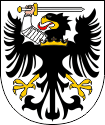 |
1466–1772, Wappen Königlich-Polnisches Preußen – Coat of arms of Royal Polish Prussia, Quelle/Source: Snamjena Germanii |
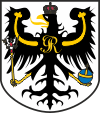 |
Wappenschild von Ostpreußen – coat of arms of East Prussia, Quelle/Source: Wikipedia (D) |
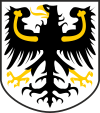 |
Wappenschild von Ostpreußen auf der Flagge – coat of arms of East Prussia on the flag |
|
|
|
Bedeutung/Ursprung des Wappens – Meaning/Origin of the Coat of Arms: |
|
| Die Ursprünge der preußischen Heraldik sind im Königlich-Polnischen Preußen zu suchen, als diese Gebiete (Pomerellen [das spätere Westpreußen], Kulmer Land, Marienburg und Elbing) 1466 vom Deutschen Orden an das Königreich Polen abgetreten und ein Lehen des Polnischen Königs wurden. Für dieses Land wurde ein Wappen geschaffen. Es zeigte den polnischen Adler in Schwarz auf silbernem (weißem) Untergrund mit einem Schwertarm. Die Farben wurden wahrscheinlich nicht zufällig gewählt, immerhin war das Königlich-Polnische Preußen vorher Territorium des Deutschen Ordens, dessen Farben Schwarz und Weiß waren (Schwarzes Kreuz auf weißem Grund). Im Jahre 1525 wandelt Hochmeister Albrecht den verbliebenen Ordensstaat (im Prinzip das Gebiet des späteren Ostpreußen, jedoch ohne das Bistum Ermland) in das weltliche Herzogtum Preußen um, Albrecht wird Herzog und schwört dem polnischen König den Lehenseid. Wieder wurde dafür ein Wappen geschaffen, wieder nach den gleichen Prinzipien. Es zeigte den polnischen Adler in Schwarz auf silbernem (weißem) Untergrund und er hatte ein gekröntes Brustschild mit der Initiale "S" des polnischen Königs Sigismund. Damit war das Wappen Preußens geschaffen. Später, als Preußen in Provinzen eingeteilt wurde, wurde dieses preußische Ur-Wappen zum Wappen der Provinz Ostpreußen, jedoch ohne das Brustschild mit dem "S", das schon 1557 mit dem Wegfall der polnischen Lehenshoheit obsolet geworden war. Anlässlich der Polnischen Teilungen konnte Preußen im Jahre 1772 das Königlich-Polnische Preußen wieder erweben. Dessen Wappen (Der Adler mit dem Schwertarm) wurde für die spätere Provinz Westpreußen übernommen. |
The origins of the Prussian heraldry can be found in Royal Polish Prussia
when these areas (Pomerelia [later West Prussia], Kulm Land, Marienburg and
Elbing) were ceded to the Kingdom of Poland in 1466 and became a fief of the
Polish king. A coat of arms was created for this country. It showed the
Polish eagle in black on a silver (white) background with a sword arm. The colors were probably not chosen at random, after all, the Royal Polish Prussia was previously a territory of the Teutonic Order, the colors of the order were black and white (black cross on a white background). In 1525, Grand Master Albrecht converted the remaining State of the Teutonic Order (in principle the area of what would later become East Prussia, but without the Diocese of Warmia) into the secular Duchy of Prussia, Albrecht became the duke and swore the oath of fief to the Polish king. Another coat of arms was created for this, again according to the same principles. It showed the Polish eagle in black on a silver (white) background and it had a crowned breastplate with the initial "S" of the Polish king Sigismund. The coat of arms of Prussia was thus created. Later, when Prussia was divided into provinces, this original Prussian coat of arms became the coat of arms of the province of East Prussia, but without the breastplate with the "S", which had already become obsolete in 1557 when the Polish feudal sovereignty ceased to exist. On the occasion of the Polish divisions, Prussia was able to gain Royal Polish Prussia in 1772. Its coat of arms (the eagle with the sword arm) was adopted for the later province of West Prussia. |
| Quelle/Source: Volker Preuß | |
|
Lesen Sie hier:
Hintergründe, Geschichte und Fakten zum Thema "Der Adler in der Heraldik"; Ausführungen, Varianten und Entwicklung. |
 |
| Landkarte – Map: |
|
Zahlen und Fakten – Numbers and Facts: |
|
|
|
|
|
|
|
|
|
|
|
|
Geschichte: |
|
13. Jhd. · Inbesitznahme durch den Deutschen Orden 1525 · Bildung des Herzogtums Preußen 1618 · zur kurbrandenburgischen Linie der Hohenzollern 1701 · Bildung des Königreichs Preußen 1813 · Befreiungskriege gegen Napoléon I. 1815 · Bildung der Provinz Ostpreußen 1824–1878 · mit Westpreußen zur Provinz Preußen vereinigt 1920 · Abtretung von Soldau an Polen, Abtretung des Memelgebiets an die Alliierten Oktober 1944 · Ostpreußen gerät in eine militärische Kesselschlacht → 614.000 zivile Tote 1945 · Aufteilung Ostpreußens in eine sowjetische und eine polnische Zone, Vertreibung der verbliebenen deutschen Bevölkerung |
History: |
|
13th cent. · appropriation by the Order of the Teutonic Order (Teutonic Knights) 1525 · creation of the Duchy of Prussia 1618 · to the brandenburgish house of the Hohenzollern 1701 · creation of the Kingdom of Prussia 1813 · liberation wars against Napoléon I. 1815 · creation of the Province of East Prussia 1824–1878 · united with West Prussia to the Province of Prussia 1920 · ceding of Soldau to Poland, ceding of the Memel area to the allies Oktober 1944 · East Prussia came into a military battue → 614.000 dead civil persons 1945 · division of East Prussia in a Soviet and a Polish zone, expulsion of the remained German population |
| Quelle/Source: Atlas zur Geschichte, Wikipedia (D), Schwarzbuch der Vertreibung, Discovery '97 |
| Landkreise und Flächenangaben in Ostpreußen – Districts and Area Informations in East Prussia: |
|
Regierungsbezirk Allenstein: (District of Allenstein)
Allenstein 1 304 km² Regierungsbezirk
Gumbinnen: Angerburg 929 km² Regierungsbezirk
Königsberg: Bartenstein 866 km² (Stand um 1934) |
Ursprung des Landesnamens – Origin of the Country's Name: |
|
| Der Name des Landes geht auf das baltische Volk der Prußen (auch Pruzzen genannt) zurück, das im 13. Jahrhundert im gebiet des heutigen Ostpreußen lebte und im Auftrag des Königs von Polen durch den Deutschen Orden unterworfen und christianisiert wurde. Der Kurfürst von Brandenburg aus dem Hause Hohenzollern trug ab 1618 zusätzlich den Titel Herzog in Preußen, und nannte sich ab 1701 König in Preußen. So kam es dazu, dass ab dieser Zeit alle hohenzollernschen Territorien unter dem Namen Königreich Preußen zusammengefasst worden. | The name of the country goes back to the Baltic people of the Old Prussians (in German called Pruzzen), who lived in the 13th century in the area of today's East Prussia, and were subjugated and christianized by the Teutonic Order on behalf of the King of Poland. The Elector of Brandenburg from the House of Hohenzollern also held the title of Duke in Prussia from 1618, and from 1701 he called himself King in Prussia. As a result, from this time on, all Hohenzollern territories were combined under the name of the Kingdom of Prussia. |
| Quelle/Source: Wikipedia (D) | |
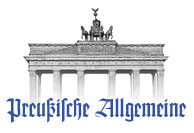 |
Preußische Allgemeine Zeitung Die Fundgrube für Geschichtsbegeisterte. Mit sehr großem kostenlosen Archiv mit den kompletten Ausgaben dieser Zeitung mit sehr interessanten Artikeln über die preußische Geschichte. |